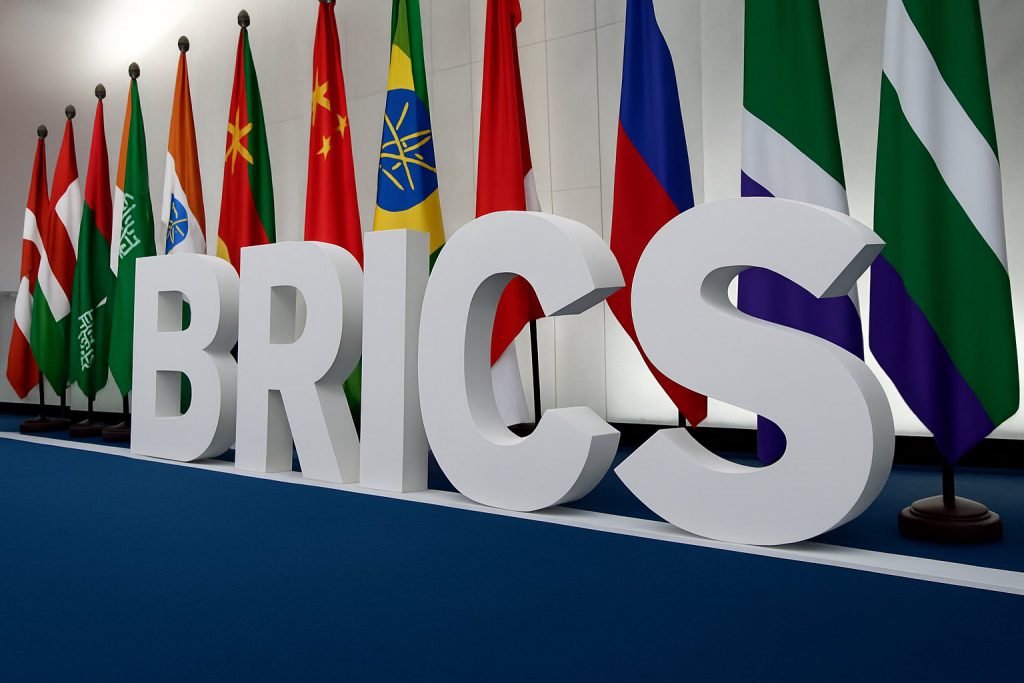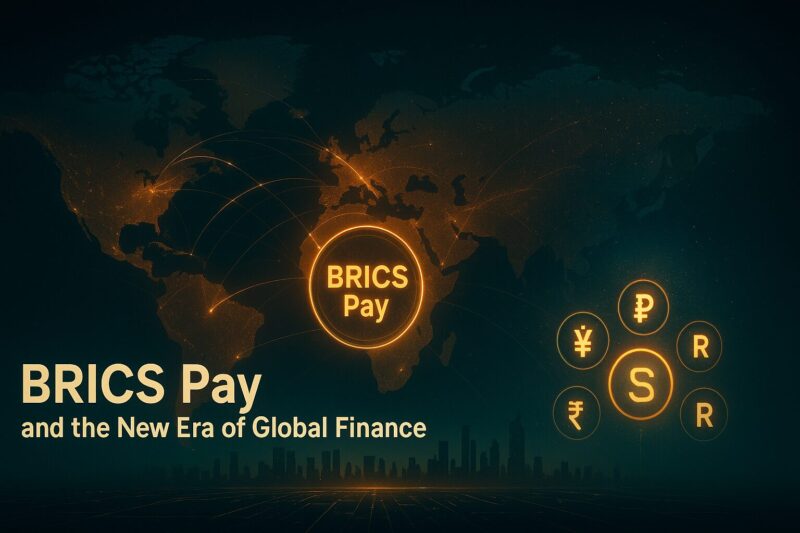BRICS Pay is actually a cross-border digital payment platform that’s being developed right now by Brazil, Russia, India, China, and South Africa to enable trade in local currencies. The system was designed to reduce dependence on the U.S. dollar and the SWIFT network, and it also provides member nations with an alternative way to handle international transactions without going through traditional dollar-based settlements.
Also Read: BRICS GDP Expands Three Times Quicker as G7 Growth Slows
How BRICS Pay’s Cross-Border Network Fuels Global De-Dollarization


Origins and Development
The groundwork for BRICS Pay was actually laid at the 2014 Fortaleza Summit. Member nations established the New Development Bank along with the Contingent Reserve Arrangement. These institutions were created to reduce reliance on Western financial systems. The BRICS Payments Task Force was formed in the early 2020s to design the technical architecture that would be needed. In October 2024, a working prototype was demonstrated in Moscow.
At the Kazan summit, Russian President Vladimir Putin had this to say:
“We are looking into the possibility of expanding the use of national currencies and settlements and want to establish the tools that would make this safe and secure.”
The de-dollarization movement has been gaining momentum. BRICS Pay is positioning itself as a key tool for countries seeking monetary independence from Western-controlled systems.
Creating an Alternative to SWIFT
SWIFT has been connecting over 11,000 financial institutions across more than 200 countries since 1973. The system operates under Western governance structures. Exclusion from SWIFT has been used as a geopolitical weapon against countries like Russia and Iran. BRICS Pay was designed specifically as an alternative that operates outside Western control.
Each BRICS nation actually contributes its own payment infrastructure to the broader network. India’s Unified Payments Interface is being integrated alongside China’s Cross-Border Interbank Payment System, Russia’s System for Transfer of Financial Messages, and even Brazil’s Pix system. These technologies are being unified to enable transactions across borders without dollar intermediation.
Janet Yellen acknowledged the impact of sanctions before the House Financial Services Committee:
“The more sanctions the U.S. imposes, the more countries [BRICS] will seek financial transaction methods that do not involve the U.S. dollar.”
This admission from a top U.S. official highlights how Western sanctions have actually accelerated the push for a SWIFT alternative among emerging economies.
Accelerating Through Local Currency Trade
BRICS Pay directly supports the broader de-dollarization agenda by eliminating the need for dollar conversion in transactions between member nations. Right now, over 90% of mutual payments between Russia and China are being made in rubles or yuan, according to statements from Russian Foreign Minister Sergei Lavrov during a recent meeting. This represents a significant shift from just a few years ago when the dollar dominated such transactions.
The 2024 Kazan Summit emphasized the importance of strengthening correspondent banking networks and expanding settlements using local currencies. This approach reduces exposure to U.S. monetary policy decisions and also provides protection against sanctions pressure.
Also Read: BRICS Countries Unload $47 Billion in US Treasuries
Venezuelan President Nicolás Maduro stated at the BRICS summit:
“We need a new economic agenda for international trade, with practical solutions for monetary exchange. A new world monetary system is a necessity.”
Attention Towards The Initiative
Other countries not initially in the BRICS have shown a lot of attention towards the initiative. It has added thirteen countries as partner countries such as Algeria, Indonesia, Malaysia, Nigeria and Turkey. This goes to show that there is an increasing trend in the quest to seek alternatives to dollar dependency in the emerging economies. Some analysts reckon that the trend is bound to carry on gaining momentum even in days to come as more countries are looking at possibilities of making cross border payments without necessarily using the Western traditional financial system.
BRICS Pay is being marketed as a feasible solution to countries that seek financial autonomy. This happens despite the technical issues with interoperability and currency conversion systems that have yet to be overcome. The success of the platform will mostly be determined by the speed at which it can scale and the extent to which the volume of trade can migrate to it to allow it become a viable long-term settlement alternative at international level.





